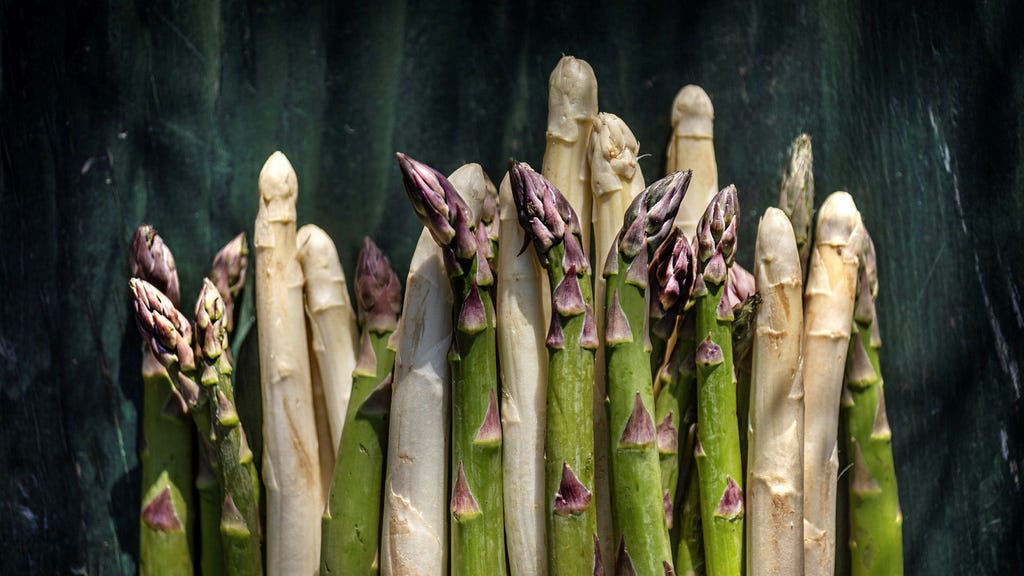The Aristocracy of Asparagus: A Culinary Meditation on the White and Green Divide
The ivory stalks of white asparagus, hidden from the sun’s embrace, emerge from the earth with a delicate, almost ethereal quality that has long captivated culinary enthusiasts. For many, the white asparagus reigns supreme, its tender flesh and subtle flavour evoking a sense of refinement and luxury. Its pale complexion, a testament to its sheltered upbringing, is often associated with a certain mystique, a whisper of exclusivity that sets it apart from its more robust, verdant counterpart. This perception of superiority is deeply ingrained in culinary traditions, where white asparagus is often treated with the utmost reverence, prepared with elaborate sauces and presented as a centerpiece of elegant meals.
Yet, this perceived superiority is not without its detractors. The very qualities that some find appealing – the delicate flavour, the tender texture – are often criticized for being too subtle, even bland. Some argue that white asparagus lacks the vibrancy and earthiness of green asparagus, its flavour profile requiring the bolstering hand of a rich sauce to truly shine. This dependence on external flavour enhancements can be seen as a weakness, a tacit admission that the white asparagus, despite its aristocratic pretensions, lacks the inherent character to stand alone. This debate, between the subtle elegance of white and the robust earthiness of green, lies at the heart of the asparagus discourse, a culinary contention that continues to divide palates and inspire passionate pronouncements.
Jens Linder, writing for Dagens Nyheter (DN), enters this fray with a nuanced perspective. He acknowledges the allure of white asparagus, its delicate flavour and tender texture undeniably appealing. However, he also echoes the sentiment that its subtle nature necessitates the accompaniment of a sauce. This is not necessarily a condemnation, but rather an observation, a recognition that the white asparagus, while possessing its own unique qualities, benefits from the complementary flavours and textures provided by a well-crafted sauce. The sauce, in this context, is not merely a masking agent, concealing a lack of flavour, but rather a highlighting agent, elevating the inherent subtleties of the white asparagus and transforming it into a truly memorable culinary experience.
The question then arises: what constitutes a suitable sauce for the delicate white asparagus? The possibilities are vast, ranging from classic hollandaise to lighter vinaigrette, each offering a unique complement to the asparagus’s subtle flavour profile. A rich, buttery hollandaise can provide a luxurious counterpoint to the asparagus’s tenderness, while a bright, acidic vinaigrette can offer a refreshing contrast, cutting through the richness and enhancing the vegetal notes. The choice of sauce, therefore, becomes an integral part of the culinary experience, a crucial element in shaping the overall flavour profile and determining the success of the dish.
Beyond the sauce, the preparation of white asparagus also requires a certain degree of care and attention. The delicate stalks must be peeled carefully, removing the fibrous outer layer and revealing the tender heart within. Proper cooking is also essential, ensuring that the asparagus is cooked through but retains a slight bite, avoiding the mushy texture that can result from overcooking. These seemingly small details play a significant role in elevating the white asparagus from a simple vegetable to a culinary delicacy, a testament to the transformative power of meticulous preparation.
Ultimately, the debate between white and green asparagus is not about declaring a definitive victor, but rather about appreciating the unique qualities of each. The white asparagus, with its delicate flavour and tender texture, offers a refined culinary experience, its subtle nuances enhanced by the complementary flavours of a well-chosen sauce. The green asparagus, on the other hand, boasts a more robust, earthy flavour, its vibrant green hue a testament to its sun-kissed upbringing. Both varieties possess their own unique charms, each offering a distinct culinary experience that deserves to be savoured and appreciated. The choice, therefore, is not one of superiority, but rather one of personal preference, a testament to the diverse and ever-evolving world of culinary delights.














